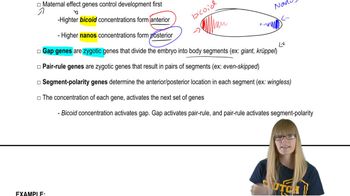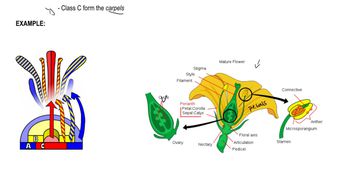Table of contents
- 1. Introduction to Genetics51m
- 2. Mendel's Laws of Inheritance3h 37m
- 3. Extensions to Mendelian Inheritance2h 41m
- 4. Genetic Mapping and Linkage2h 28m
- 5. Genetics of Bacteria and Viruses1h 21m
- 6. Chromosomal Variation1h 48m
- 7. DNA and Chromosome Structure56m
- 8. DNA Replication1h 10m
- 9. Mitosis and Meiosis1h 34m
- 10. Transcription1h 0m
- 11. Translation58m
- 12. Gene Regulation in Prokaryotes1h 19m
- 13. Gene Regulation in Eukaryotes44m
- 14. Genetic Control of Development44m
- 15. Genomes and Genomics1h 50m
- 16. Transposable Elements47m
- 17. Mutation, Repair, and Recombination1h 6m
- 18. Molecular Genetic Tools19m
- 19. Cancer Genetics29m
- 20. Quantitative Genetics1h 26m
- 21. Population Genetics50m
- 22. Evolutionary Genetics29m
14. Genetic Control of Development
Developmental Patterning Genes
Problem 22b
Textbook Question
Textbook QuestionThree-spined stickleback fish live in lakes formed when the last ice age ended 10,000 to 15,000 years ago. In lakes where the sticklebacks are prey for larger fish, they develop 35 bony plates along their body as armor. In contrast, sticklebacks in lakes where there are no predators develop only a few or no bony plates. In crosses between fish of the two different morphologies, the lack of bony armor segregates as a recessive trait that maps to the ectodermal dysplasin (Eda) gene. Comparisons between the Eda-coding regions of the armored and nonarmored fish revealed no differences. How can you explain this result?
 Verified Solution
Verified SolutionThis video solution was recommended by our tutors as helpful for the problem above
Video duration:
3mPlay a video:
236
views
Was this helpful?
Related Videos
Related Practice
Showing 1 of 2 videos


